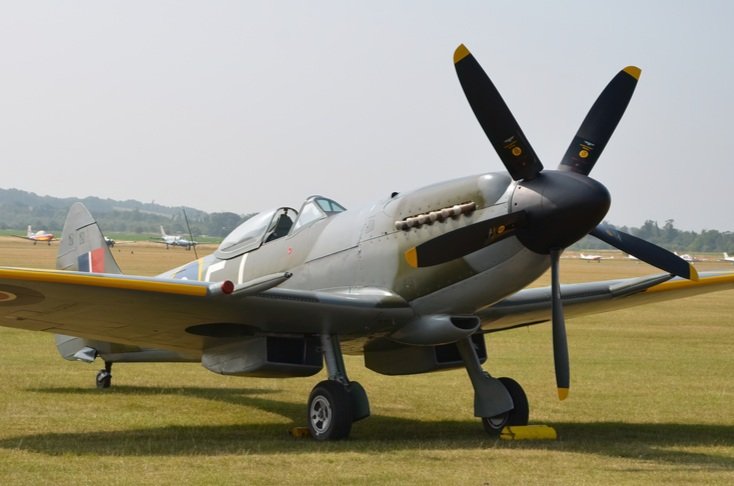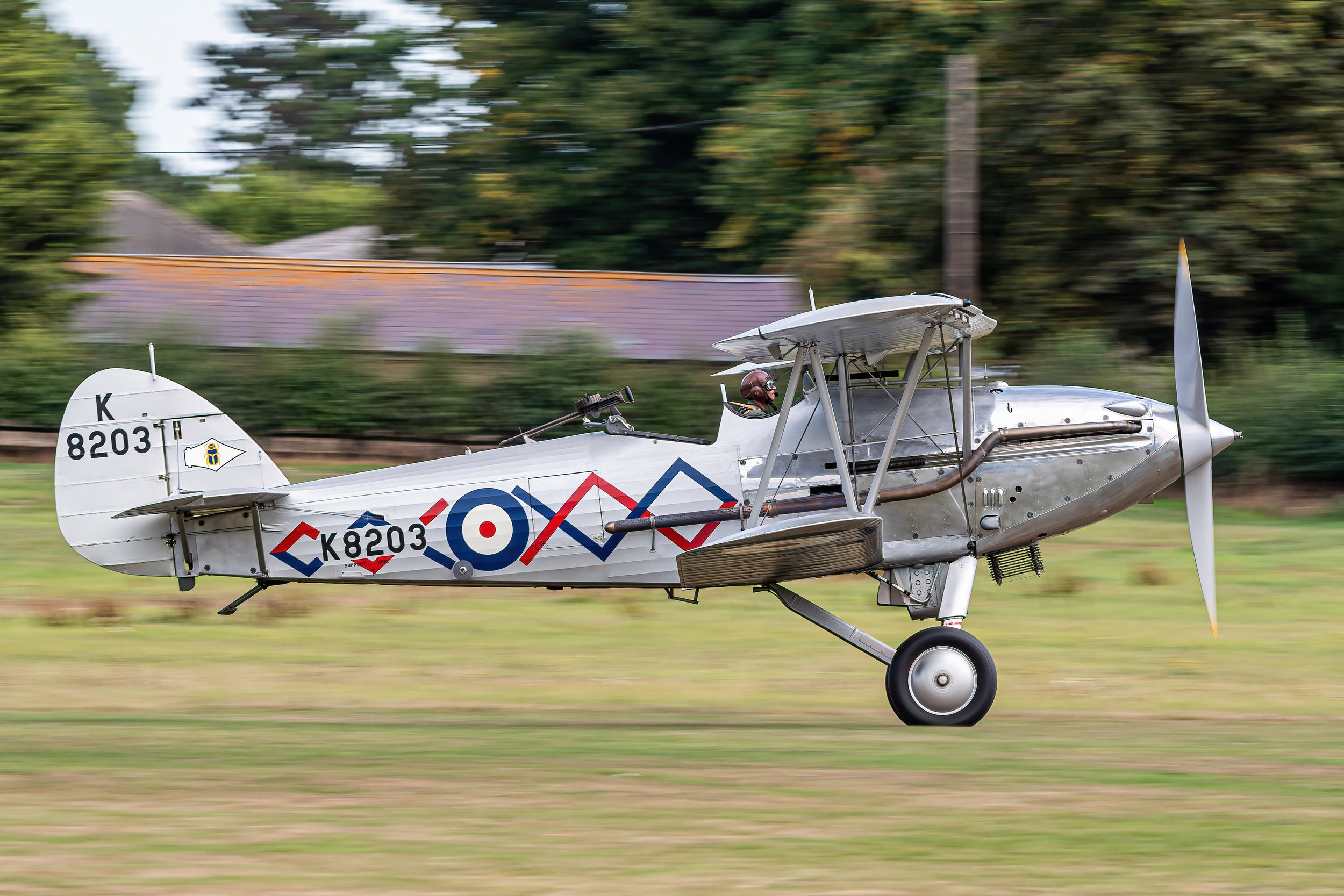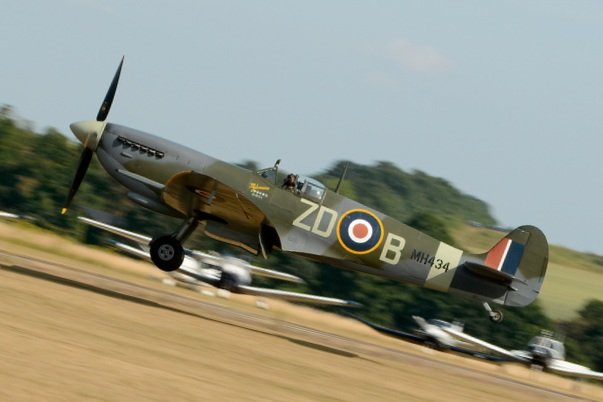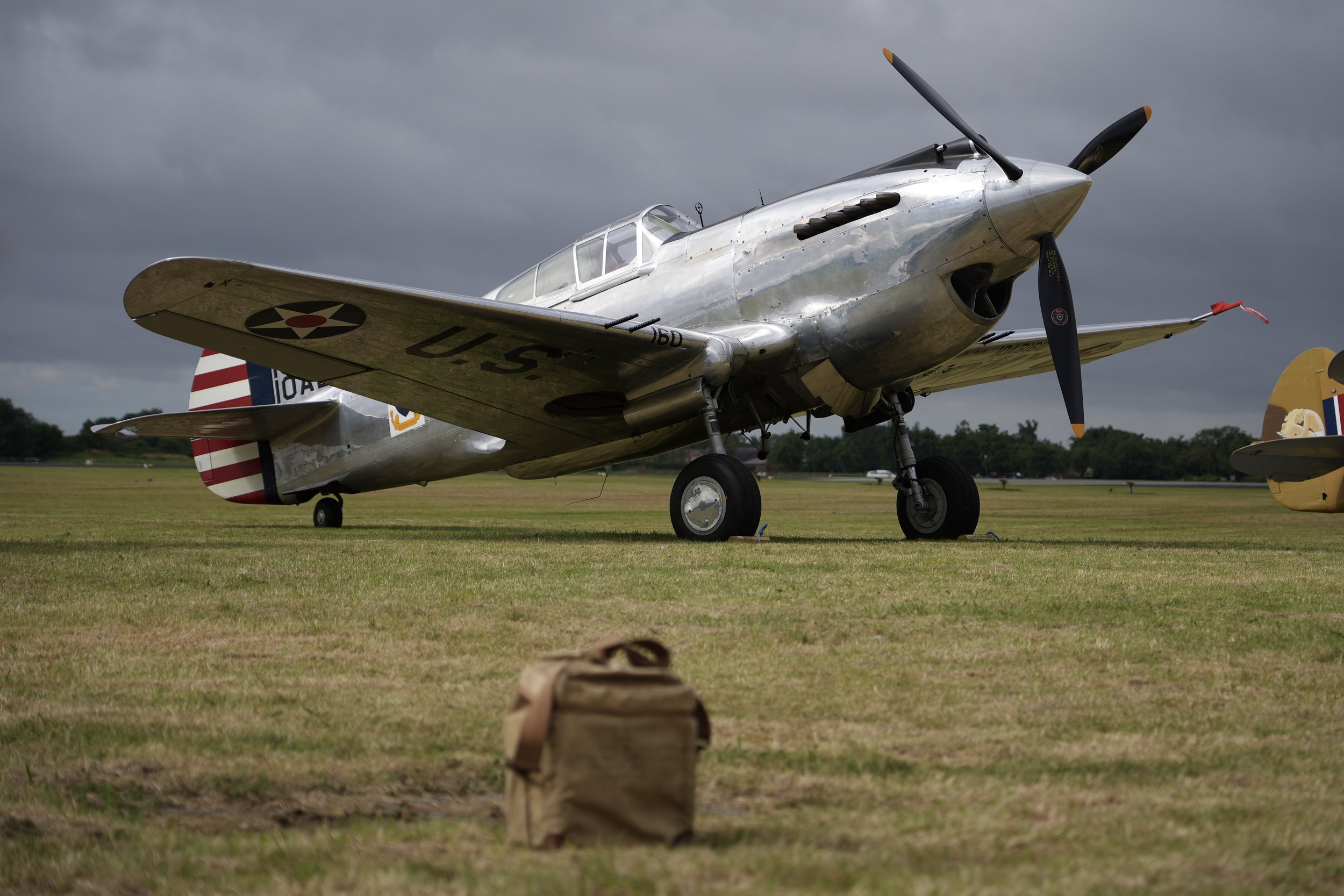Mustang G-CMDK
Year built
1945
Aircraft
P-51D-25-NA
Base
East Midlands Airport / Biggin Hill Airport
Constructed as a P-51D-25-NA, the leased Rolls-Royce Heritage Flight Mustang rolled off the North American Aviation production line at Inglewood, California, in mid-1944. It was delivered in July 1945 as USAAF Serial No. 44-73877 but did not see combat during World War Two. It is believed that the aircraft spent most of its service life in various training units in the USA. In 1951 it was delivered to the Royal Canadian Air Force and assigned Serial No. RCAF 9279. It served with No 403 City of Calgary Squadron until April 1959, when it was retired. With the Griffon-powered Spitfire PS853 continuing its duty successfully flying the flag for Rolls-Royce, it was decided in recent years to add to the “Heritage Flight” by operating an iconic Merlin-powered aircraft. “The Mustang was seen as a perfect fit, as it has global appeal and celebrates a historic and ongoing relationship between Rolls-Royce and the United States Air Force. Having decided on the Mustang, Rolls-Royce approached Shaun Patrick, then-owner of UK-based P-51D Mustang, G-SHWN, the Shark, about leasing his aircraft. Shaun was very supportive of the request and mission. In April 2020, it re-emerged from a repaint in the colours of Col Donald Blakeslee, the legendary Commanding Officer of the 4th Fighter Group, the Debden Eagles. The bare-metal paint scheme was meticulously researched to ensure that the Mustang is a very accurate representation of Blakeslee’s wartime mount, “WD-C,” USAAF Serial No. 44-13779. “WD-C”- known as Warhorse, a nod to the Mustang’s namesake and Blakeslee’s radio call sign, Horseback Leader, operates from a dedicated hangar at East Midlands Airport (EMA), near the main Rolls-Royce site in Derby, UK. It is housed there alongside PS853 and Harvard IIB (G CORS). The aircraft has recently changed hands and is now owned by Peter Monk of Warbird Experiences, Biggin Hill.
| Back to Top |
North American P-51D-20-NA Mustang
The North American Aviation P-51 Mustang is an American long-range, single-seat fighter and fighter-bomber used during World War II and the Korean War, among other conflicts. The Mustang was designed in April 1940 by a design team headed by James Kindelberger of North American Aviation (NAA) in response to a requirement of the British Purchasing Commission. The Purchasing Commission approached North American Aviation to build Curtiss P-40 fighters under license for the Royal Air Force (RAF). Rather than build an old design from another company, North American Aviation proposed the design and production of a more modern fighter. The prototype NA-73X airframe was rolled out on 9 September 1940, 102 days after the contract was signed, and first flew on 26 October.
The Mustang was designed to use the Allison V-1710 engine, which had limited high-altitude performance in its earlier variants. The aircraft was first flown operationally by the RAF as a tactical-reconnaissance aircraft and fighter-bomber (Mustang Mk I). Replacing the Allison with a Rolls-Royce Merlin resulted in the P-51B/C (Mustang Mk III) model, and transformed the aircraft's performance at altitudes above 15,000 ft (4,600 m) (without sacrificing range), allowing it to compete with the Luftwaffe's fighters. The definitive version, the P-51D, was powered by the Packard V-1650-7, a license-built version of the two-speed, two-stage-supercharged Merlin 66, and was armed with six .50 calibre (12.7 mm) AN/M2 Browning machine guns.
From late 1943, P-51Bs and P-51Cs (supplemented by P-51Ds from mid-1944) were used by the USAAF's Eighth Air Force to escort bombers in raids over Germany, while the RAF's Second Tactical Air Force and the USAAF's Ninth Air Force used the Merlin-powered Mustangs as fighter-bombers, roles in which the Mustang helped ensure Allied air superiority in 1944. The P-51 was also used by Allied air forces in the North African, Mediterranean, Italian, and Pacific theatres. During World War II, Mustang pilots claimed to have destroyed 4,950 enemy aircraft.
At the start of the Korean War, the Mustang, by then redesignated F-51, was the main fighter of the United States until jet fighters, including North American's F-86, took over this role; the Mustang then became a specialized fighter-bomber. Despite the advent of jet fighters, the Mustang remained in service with some air forces until the early 1980s. After the Korean War, Mustangs became popular civilian warbirds and air racing aircraft.
| Back to Top |













| Back to Top |

































